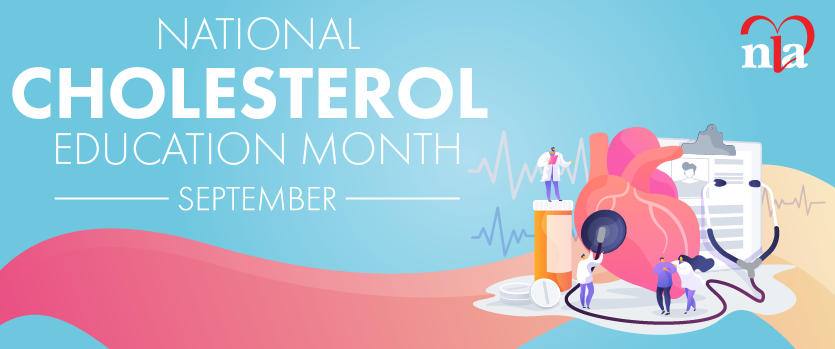Further Results of AIM-HIGH Presented at AHA 2011 Scientific Sessions Statement to NLA Members
Further analysis from the Atherothrombosis Intervention in Metabolic Syndrome with Low HDL/High Triglycerides: Impact on Global Health (AIM-HIGH) trial was presented on November 15, 2011, at the American Heart Association (AHA) 2011 Scientific Sessions. The investigators echoed previous statements that combination therapy with extended-release niacin did not demonstrate incremental clinical benefit to coronary heart disease (CHD) patients for five component primary endpoints and concluded that more research is needed on niacin effects with low high-density lipoprotein (HDL) patients.1
Specifically, the investigators reported:
- Among patients with stable, non-acute, cardiovascular disease and low-density lipoprotein cholesterol (LDL-C) levels of <70 mg/dL, there was no incremental clinical benefit from the addition of niacin to statin therapy during a 36-month follow-up, despite significant improvements in HDL and triglycerides.1
- AIM-HIGH reaffirms the current National Cholesterol Education Program Adult Treatment Panel III (NCEP ATP-III) treatment guidelines for LDL-C lowering as the principal lipid treatment guidelines.1
- Additional analyses will be required to determine if certain subsets of patients with low HDL in AIM-HIGH may benefit from niacin treatment.1
It is also noteworthy that these patients with CHD were very well treated with beta blockers (80%); Angiotensin-converting enzyme inhibitors (ACEI) / Angiotensin II receptor blockers (ARBs) (75%); and aspirin (98%). At entry most of the patients were previously taking a statin (94%) had well controlled LDL (71 mg/dL) and had been on a statin for more than one year (76%). Because of the active management of LDL, the non-niacin group got more concomitant therapy, complicating the trial results (21.5% of patients were also taking ezetimibe in the placebo plus statin group versus 9.5% in the extended-release niacin plus statin group).
All of the patients in the study had cardiovascular disease and low levels of HDL (under 40 mg/dL for men or 50 mg/dL for women). In addition, patients were first given open-label niacin before randomization to ensure tolerability and compliance.
Analysis of the results appears to suggest that the increased risk of ischemic stroke with extended-release niacin, which was one of the key reasons that the trial was halted early, could have been a "play of chance" since the final P value for ischemic stroke was non-significant (0.11).2
Analysis
The preliminary AIM-HIGH results were reported to the membership of the National Lipid Association in our statement made on June 8, 2011. In view of the recent investigator statements, the NLA would like to provide additional analysis to our members.
The AIM-HIGH trial was the first large-scale outcomes study to evaluate the impact of adding extended-release niacin to statin therapy (simvastatin) in patients with established coronary disease. The study was designed to test whether or not increasing HDL and lowering triglycerides in patients with low HDL and high triglycerides will reduce the risk of recurrent cardiovascular events by 25% in patients whose LDL-C was already within a desirable range with statin therapy. The study was able to achieve only a 4 mg/dL separation in HDL between treatment groups, though the increase from baseline was greater with niacin as expected (up 25.0% versus 9.8%, P<0.001). The LDL difference between the groups at study end was <6 mg/dL. Because of the small difference between treatment arms and the early termination of the trial, AIM-HIGH was underpowered to prove the hypothesis that niacin therapy may be beneficial in a secondary prevention population with controlled LDL-C. Therefore, the results of the study cannot be extrapolated to all patients with low HDL or all patients with uncontrolled LDL.
Niacin remains an important therapy in secondary prevention (Coronary Drug Project) in patients not taking a statin, or those who may be statin intolerant. Niacin may also be important for CHD patients on a statin who are not at their LDL-C goal. This has been observed in previous studies including the HDL-Atherosclerosis Treatment Study (HATS) in low HDL patients. However, it should be recognized that none of these trials compared statin monotherapy to statin combined with niacin therapy. In addition to raising HDL, niacin lowers Apolipoprotein B/LDL particle number as well as lipoprotein(a), a potent atherogenic risk factor.
The findings of AIM-HIGH will require careful study to determine if there are specific reasons for the failure of niacin to provide incremental risk reduction in this population of patients. The entire question of emerging science related to modulation of HDL in blood plasma is still being evaluated as new therapies beyond niacin are being developed. Ongoing pharmaceutical outcomes studies such as HPS2-THRIVE with over 25,000 patients may provide more insight regarding the efficacy of niacin to reduce CHD events.
Recommendations for clinicians
The findings are disappointing in this specific population and should not be generalized to the primary prevention population. Physicians should not alter their prescribing practices if that would deter patients from achieving NCEP ATP III recommendations. A continued focus on achieving risk stratified NCEP ATP III goals and recommending therapeutic lifestyle changes (especially exercise regimens and weight loss if overweigh/obese patients) is warranted for treating cardiovascular disease patients at high risk and with low HDL levels.
With regard to niacin, the outcome of this study should not be taken as an indictment of niacin in its ability to raise HDL nor diminish its benefit in lipid management in patients at risk for cardiovascular disease. The goal is to first get patients below LDL-C target and other appropriate strategies including diet, exercise, weight reduction, smoking cessation and therapeutic agents to achieve all lipid and lipoprotein goals. The lipidologist or primary care community should seek to manage all aspects of the risk profile to achieve NCEP ATP III goals.
Recommendations for patients
Managing lipids (commonly called cholesterol) is a life-long matter and discontinuing any therapy should not be done without the advice of your physician. Patients should work with the clinical team to emphasize diet and especially exercise in all cases to modify cholesterol levels. Getting to your cholesterol goals is extremely important and you should always discuss all therapy options with your physician. Furthermore, the findings presented on niacin are very specific to certain patients in this study. They may or may not apply to you. Talk to your doctor about your situation relevant to these results and remain on therapy until told by your doctor about other alternatives.
References:
- Boden WE. AIM-HIGH Extended-Release Niacin Does Not Reduce Clinical Events in Patients with Established Cardiovascular Disease Whose LDL-Cholesterol is Optimally Controlled with Statin Therapy: Results from the AIM-HIGH Trial Paper presented at: American Heart Association 2011 Scientific Session2011; Orlando, FL.
- Hughs S. AIM-HIGH: Results raise controversy over early stopping. 2011.
http://www.theheart.org/article/1311689.do. Accessed November 15, 2011.
For comments on this topic, please Click Here view the topic page
The NLA contributors to this paper have provided full disclosures and their thoughts on this matter have not been influenced by bias or commercial interest. The viewpoints expressed here represent the clinical experience and opinion of our experts and the scientific evidence, which serves as the basis of clinical lipidology. All members of the organization and others reviewing this document are urged to thoroughly review the study and place this, in addition to other learned comment, in the context of meeting the interests of patient care. The NLA further discloses that the association has received educational grants from multiple manufacturers to support accredited medical educational activities. There was no funding or any interaction with any manufacturer in regard to this statement.
Author Disclosures:
|
Benjamin J. Ansell, MD, FNLA |
W. Virgil Brown, MD, FNLA |
|
Jerome D. Cohen, MD, FNLA |
Michael H. Davidson, MD, FNLA |
|
James M. Falko, MD, FNLA |
Anne C. Goldberg, MD, FNLA |
|
Matthew K. Ito, PharmD, FNLA |
Penny Kris-Etherton, RD, PhD, FNLA |
|
Terry A. Jacobson, MD, FNLA |
James A. Underberg, MD, FNLA |






.jpg)
.png)










